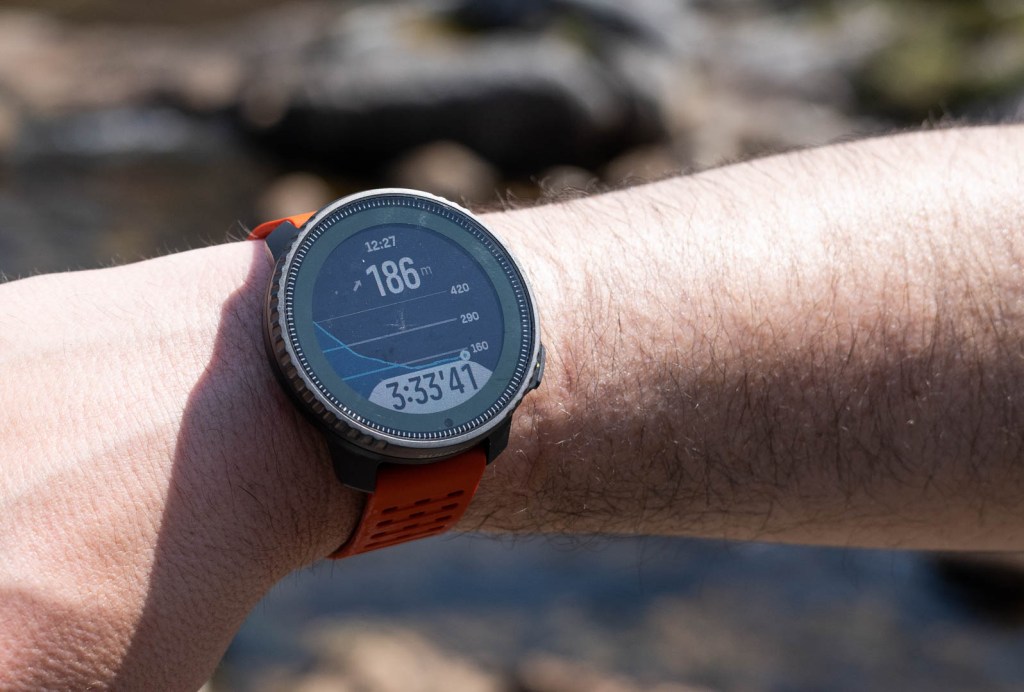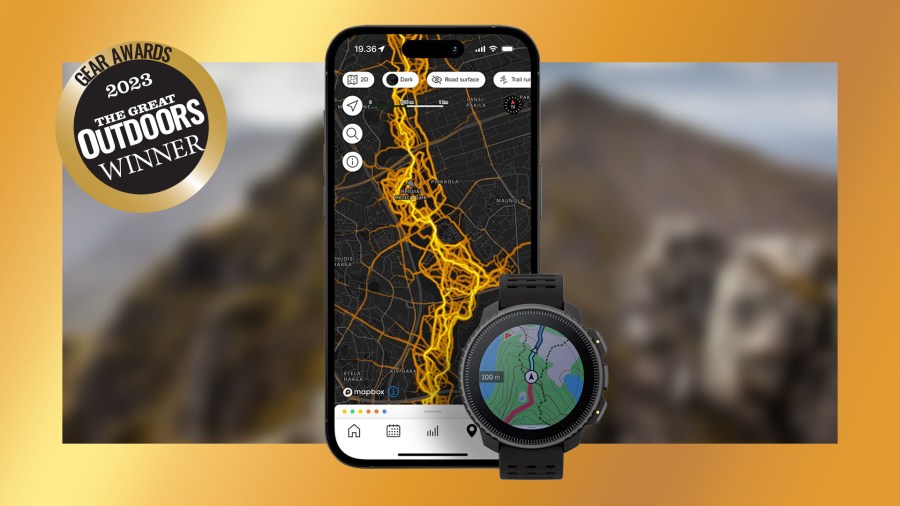The Suunto Vertical Titanium Solar boasts excellent build quality, accuracy and battery life – and comes with just a couple of downsides, says Alex Roddie.
The Suunto Vertical Titanium Solar is the brand’s latest GPS watch aimed at mountain sports enthusiasts and athletes. It comes in two models: a base model made from stainless steel starting at £545, and a titanium one with solar charging which costs £725 (tested). The included silicone strap is soft and a bit stretchy with quality metal hardware.
The Suunto Vertical was named the winner in the Navigation category in the TGO Gear Awards 2023.
SQUIRREL_BUTTON_12925512
- Stars: 4
- Price: £725 (as reviewed; other configurations start at £545)
- Weight: 74g
- Pros: Class-leading battery life; solar charging; relatively easy to use
- Cons: Big and bulky; mapping lacks text labels; flimsy magnetic charger; laggy operation
Case size: 49 x 49 x 13.6mm | Screen: 1.4” transflective colour, always-on | Battery life (GPS on): 85–280 hours depending on features and solar intensity; weeks or months in power-save mode | OS grid ref: Yes | Mapping: Yes; contours and footpaths but no labels | Operation: Buttons and touchscreen
Build quality is excellent and the design attractive, but it’s physically gigantic on my 6.2in wrist. I’d prefer to see a version no more than 42mm wide and 10mm thick.
The circular screen is highly legible in direct sunlight and ok indoors, and an improvement on older models. It’s a touchscreen – most operations can be done by either touch or the three buttons, which are tactile and easy to use wearing gloves.
The interface is based on the Suunto 9 series with a few tweaks. Overall, it’s simpler to use and with less to configure than some competitors. Swiping and tapping through the interface can feel laggy at times, though.

Alex Roddie using the Suunto Vertical in the Highlands of Scotland. Photo: James Roddie
Topo mapping can be downloaded via the Suunto app. However, map downloads require the watch to be plugged in and connected to Wi-Fi. The maps are good enough to use on the go, with contours and footpaths that I found accurate. Downsides? There are no text labels, which means this map is more for quick checks than making navigation decisions, and you can’t zoom out very far.
Battery life is phenomenal, easily the best of any GPS watch I’ve tried. With default settings I was able to match the advertised 85 hours of GPS-on time, and after tweaks and turning off unnecessary features I saw this extended. The solar bezel also helps to extend battery life. The included charging cable clips on magnetically, but this is a weak connection and I occasionally found it falling off or failing to charge.
I found GPS and sensor accuracy to be excellent, agreeing in every case with other devices known to be accurate.
Overall, this is one of the most impressive GPS watches I’ve tested, and a good choice for anyone needing a mountain navigation companion that can take serious abuse.
Alex Roddie has tested many of the best GPS watches on the market – see how the Suunto Vertical Titanium Solar compares.

Tested by Alex Roddie
Alex Roddie tested this watch on a multi-day walk into the Fisherfield Forest and beyond in the Scottish Highlands. Weights stated include the standard strap, weighed on Alex’s digital scale.








